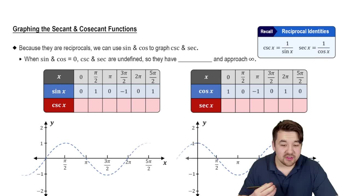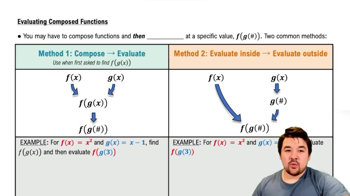Test
Table of contents
- 0. Functions7h 54m
- Introduction to Functions16m
- Piecewise Functions10m
- Properties of Functions9m
- Common Functions1h 8m
- Transformations5m
- Combining Functions27m
- Exponent rules32m
- Exponential Functions28m
- Logarithmic Functions24m
- Properties of Logarithms36m
- Exponential & Logarithmic Equations35m
- Introduction to Trigonometric Functions38m
- Graphs of Trigonometric Functions44m
- Trigonometric Identities47m
- Inverse Trigonometric Functions48m
- 1. Limits and Continuity2h 2m
- 2. Intro to Derivatives1h 33m
- 3. Techniques of Differentiation3h 18m
- 4. Applications of Derivatives2h 38m
- 5. Graphical Applications of Derivatives6h 2m
- 6. Derivatives of Inverse, Exponential, & Logarithmic Functions2h 37m
- 7. Antiderivatives & Indefinite Integrals1h 26m
- 8. Definite Integrals4h 44m
- 9. Graphical Applications of Integrals2h 27m
- 10. Physics Applications of Integrals 3h 16m
- 11. Integrals of Inverse, Exponential, & Logarithmic Functions2h 31m
- 12. Techniques of Integration7h 41m
- 13. Intro to Differential Equations2h 55m
- 14. Sequences & Series5h 36m
- 15. Power Series2h 19m
- 16. Parametric Equations & Polar Coordinates7h 58m
0. Functions
Introduction to Functions
Problem 112c
Textbook Question
Daylight function for 40 °N Verify that the function D(t)=2.8sin(3652π(t−81))+12 has the following properties, where t is measured in days and D is the number of hours between sunrise and sunset.
and (corresponding to the equinoxes).
 Verified step by step guidance
Verified step by step guidance1
First, understand the function D(t) = 2.8\sin\left(\frac{2\pi}{365}(t-81)\right) + 12. This function models the number of daylight hours as a sinusoidal function of time, where t is the day of the year.
To verify the property D(81) = 12, substitute t = 81 into the function: D(81) = 2.8\sin\left(\frac{2\pi}{365}(81-81)\right) + 12. Simplify the expression inside the sine function.
Notice that \sin(0) = 0, so the expression becomes D(81) = 2.8 \times 0 + 12 = 12. This confirms that D(81) = 12, which corresponds to the spring equinox.
Next, verify the property D(264) \approx 12. Substitute t = 264 into the function: D(264) = 2.8\sin\left(\frac{2\pi}{365}(264-81)\right) + 12. Simplify the expression inside the sine function.
Calculate \frac{2\pi}{365}(264-81) and find the sine of this angle. Since the sine function oscillates between -1 and 1, the value of D(264) will be close to 12, confirming the property for the autumn equinox.
 Verified video answer for a similar problem:
Verified video answer for a similar problem:This video solution was recommended by our tutors as helpful for the problem above
Video duration:
7mPlay a video:
Was this helpful?
Key Concepts
Here are the essential concepts you must grasp in order to answer the question correctly.
Trigonometric Functions
Trigonometric functions, such as sine, are fundamental in calculus and describe relationships between angles and sides of triangles. In the context of the daylight function, the sine function models periodic phenomena, such as the variation in daylight hours throughout the year. Understanding how to manipulate and interpret these functions is crucial for analyzing the behavior of the function D(t).
Recommended video:

Introduction to Trigonometric Functions
Periodic Functions
A periodic function is one that repeats its values at regular intervals, known as the period. The function D(t) is periodic with a period of 365 days, reflecting the annual cycle of daylight hours. Recognizing the periodic nature of such functions allows for predictions about daylight at any given time of the year, which is essential for solving related problems.
Recommended video:

Graphs of Secant and Cosecant Functions
Function Evaluation
Function evaluation involves substituting a specific input value into a function to determine its output. In this case, evaluating D(t) at specific values like t=81 and t=264 helps to understand the function's behavior at key points, such as the equinoxes. Mastery of function evaluation is necessary for analyzing and interpreting the results of the daylight function.
Recommended video:

Evaluating Composed Functions

 1:36m
1:36mWatch next
Master Introduction to Calculus Channel with a bite sized video explanation from Patrick
Start learningRelated Videos
Related Practice
Open Question
